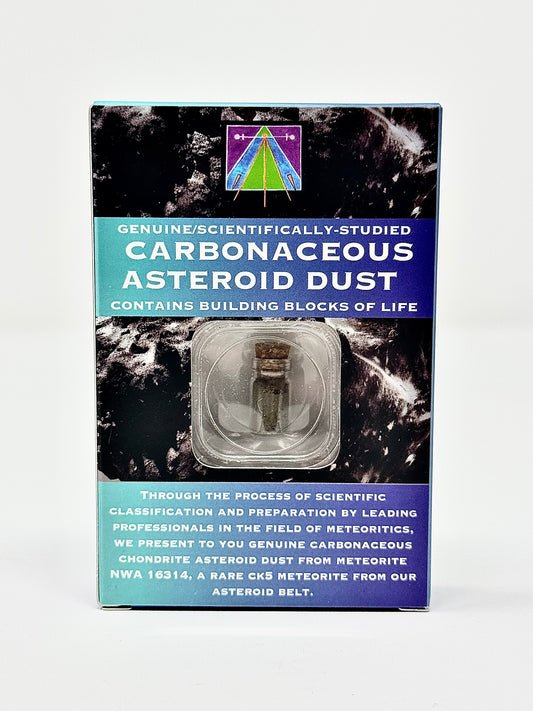Collection: Stony Meteorites (Parent Bodies: Asteroids, Moon, Mars)

Stony meteorites are the most common type of meteorites, accounting for the majority of meteorites discovered on Earth. They are primarily composed of silicate minerals such as olivine and pyroxene, giving them a rocky appearance. These meteorites are divided into two main groups:
Chondrites: These are some of the oldest materials in our solar system, dating back over 4.5 billion years. They contain tiny, spherical particles called chondrules, which formed as molten or partially molten droplets in the early solar nebula. Because they haven't undergone significant melting or differentiation, chondrites are considered primitive building blocks of the solar system, providing valuable clues about its earliest history.
Achondrites: These meteorites come from parent bodies that experienced melting, differentiation, and volcanic activity. They include material from the Moon and Mars, as well as other differentiated asteroids. Achondrites often resemble terrestrial igneous rocks, indicating they originated from planetary bodies that underwent geological processes.
Studying stony meteorites helps scientists understand planetary formation, the early solar system, and the geological history of planetary bodies like the Moon and Mars. For example, some Martian meteorites provide direct samples of Mars's surface, offering insights into its volcanic activity and potential past habitability. Similarly, lunar meteorites help us learn about the Moon's volcanic history and surface composition.
-
Carbonaceous Chondrite Meteorite Dust - Like Asteroid Bennu!
Regular price $28.00 USDRegular priceUnit price / per$32.99 USDSale price $28.00 USDSale -
8.2g NWA 17680 “The Blue Lunar” Breathtaking Lunar Melt Breccia With Blue Tint! A Genuine Stone From Our Moon!
Regular price $615.00 USDRegular priceUnit price / per -
4.0g NWA 17680 “The Blue Lunar” Breathtaking Lunar Melt Breccia With Blue Tint! A Genuine Stone From Our Moon!
Regular price $300.00 USDRegular priceUnit price / per -
3.8g NWA 17680 “The Blue Lunar” Breathtaking Lunar Melt Breccia With Blue Tint! A Genuine Stone From Our Moon!
Regular price $285.00 USDRegular priceUnit price / per -
4.1g NWA 17680 “The Blue Lunar” Breathtaking Lunar Melt Breccia With Blue Tint, Vugs and Metal Impactors! A Genuine Stone From Our Moon!
Regular price $300.00 USDRegular priceUnit price / per -
4.4g NWA 17680 “The Blue Lunar” Breathtaking Lunar Melt Breccia With Blue Tint! A Genuine Stone From Our Moon!
Regular price $325.00 USDRegular priceUnit price / per -
1.2g NWA 17680 “The Blue Lunar” Breathtaking Lunar Melt Breccia With Blue Tint! A Genuine Stone From Our Moon!
Regular price $84.00 USDRegular priceUnit price / per -
28.8g Lunar Troctolitic Melt - WHOLE STONE! A Rare Lunar Meteorite From Deep Within The Moon
Regular price $2,160.00 USDRegular priceUnit price / per -
43.0g Lunar Troctolitic Melt - WHOLE STONE! A Rare Lunar Meteorite From Deep Within The Moon
Regular price $3,225.00 USDRegular priceUnit price / per -
45.8g Lunar Troctolitic Melt - WHOLE STONE! A Rare Lunar Meteorite From Deep Within The Moon
Regular price $3,435.00 USDRegular priceUnit price / per -
62.3g Lunar Troctolitic Melt - WHOLE STONE! A Rare Lunar Meteorite From Deep Within The Moon
Regular price $4,670.00 USDRegular priceUnit price / per -
18.1g Stunning, Genuine Martian Meteorite with Aqueous Alteration - Pending Classification - Scientifically Studied Rock From Planet Mars
Regular price $3,710.00 USDRegular priceUnit price / per -
3.3g Genuine Martian Meteorite with Aqueous Alteration - Pending Classification - Scientifically Studied Rock From Planet Mars
Regular price $685.00 USDRegular priceUnit price / per -
2.8g Genuine Martian Meteorite with Aqueous Alteration - Pending Classification - Scientifically Studied Rock From Planet Mars
Regular price $575.00 USDRegular priceUnit price / per -
0.8g Genuine Martian Meteorite with Aqueous Alteration - Pending Classification - Scientifically Studied Rock From Planet Mars
Regular price $170.00 USDRegular priceUnit price / per -
1.2g Genuine Martian Meteorite with Aqueous Alteration - Pending Classification - Scientifically Studied Rock From Planet Mars
Regular price $255.00 USDRegular priceUnit price / per















